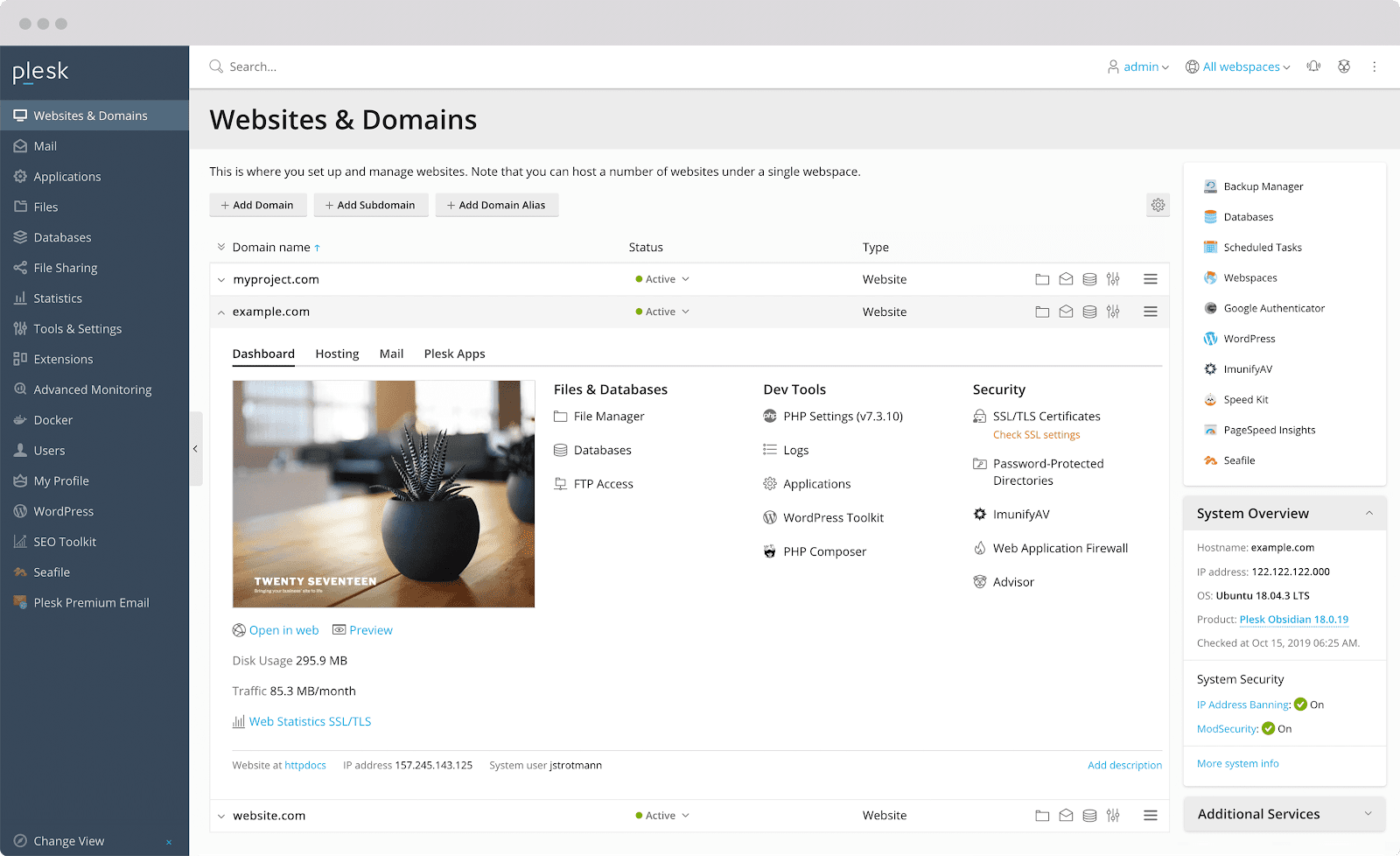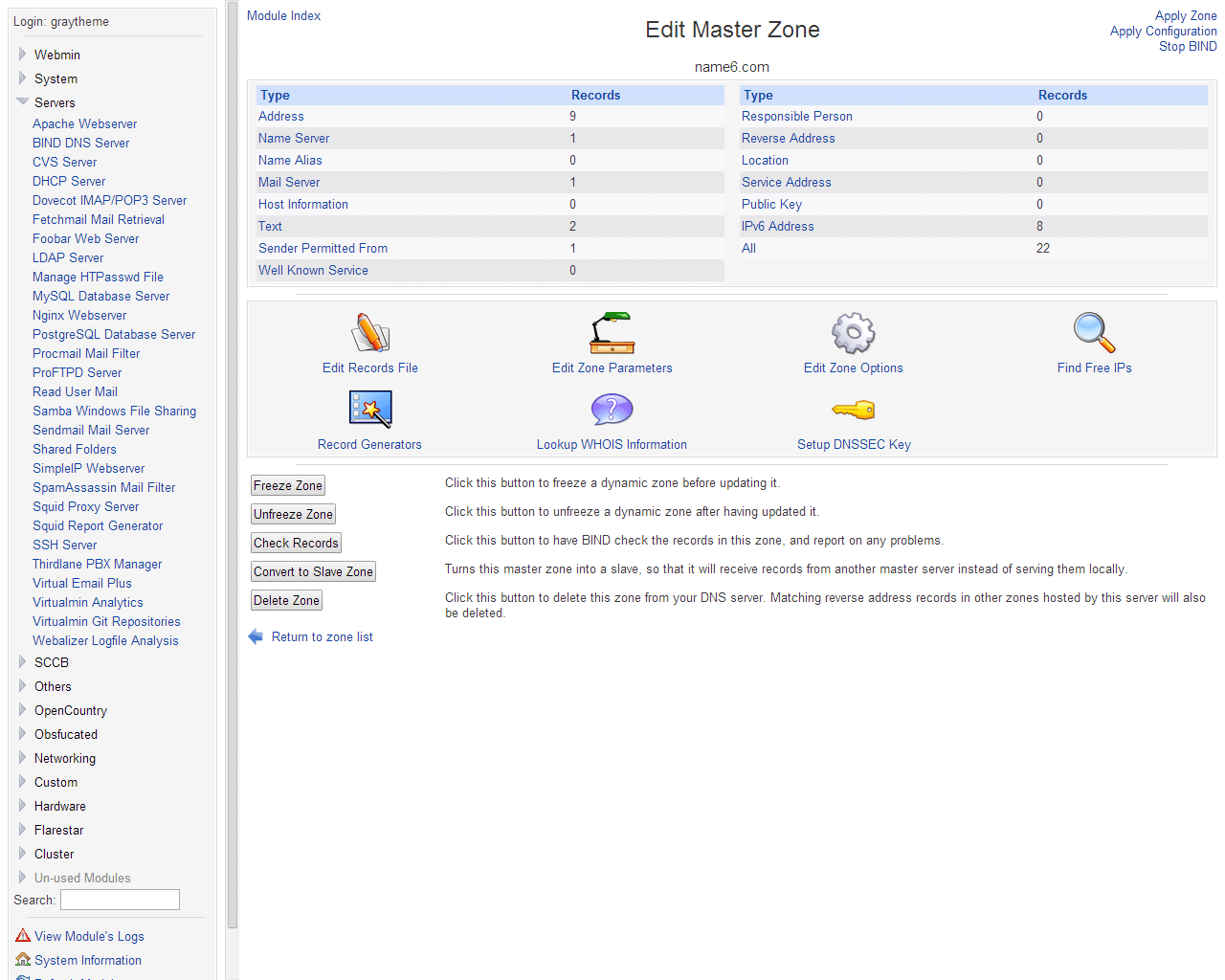How to Select the Right Web Hosting Control Panel for Your Reseller Hosting Business

One of the first decisions a web hosting reseller business owner will have to make is deciding which hosting control panel to offer users. A web hosting control panel is an application that provides an interface to clients for controlling and managing their website, email, and more without having to contact support. Choosing the wrong control panel can leave users frustrated and result in customer cancellations.
What Is A Web Hosting Control Panel?
Web hosting control panels are made up of a set of scripts and an interface for interacting with them.
The scripts hook into the features of the server’s operating system and services. For example, most web hosting control panels include an interface for configuring the server’s firewall. The control panel uses scripts to run the firewall’s configuration tools or to write instructions to its configuration file. The scripts may be written in any of a variety of programming languages, including shell, Python, Perl, or Ruby.
The second component, the interface, is a web application accessed via a web browser. The interface is divided into modules or tabs, each of which includes widgets for making changes to the server’s configurations and for displaying information about its status.
Web hosting control panels provide two complementary sets of features. The first is controls for server administration. These are used by hosting resellers to manage and configure their servers. The second set of features is aimed at web hosting clients. It includes functionality for managing individual hosting accounts, such as installing content management systems, managing mail accounts, configuring domains, and more.
The Benefits of a Hosting Control Panel
Without a web hosting control panel, server administrators and web hosting clients have to log in over an SSH connection to manage their server. They have to learn how to use command-line tools and to understand the configuration file formats for services such as web servers, databases, and DNS servers. Web hosting control panels have a much shallower learning curve, allowing even an inexperienced server administrator to learn server management basics without extensive study.
A web hosting control panel also reduces the likelihood of server configuration errors. The control panel is developed by experts who understand the underlying tools. When you make a change in the control panel, you are less likely to make a mistake that causes service disruption or security vulnerabilities than if you used the command line directly and, for instance, missed a vital option when typing a command.
What Functionality Do Web Hosting Control Panels Provide?
A full-featured web hosting control panel can control every aspect of the server that a web hosting reseller is likely to need. With the leading web hosting control panels, you are unlikely to ever need to drop down to the command line, although that option is always available should you want to.
The basic functionality you should expect from a web hosting control panel for reseller hosting include:
- User account management. Create, manage, and remove user accounts on the server.
- Domain management. Add and remove domains, subdomains, and redirects.
- Support for standard applications and services. Your control panel should support services including web servers like Apache and NGINX, databases like MySQL and PostgreSQL, email servers, and more.
- Software management. Install, update, and remove software. This should include software management via the server’s built-in package management tools and scripts for installing web applications such as WordPress.
The most popular control panels include all of these features and more, either integrated with the control panel or available as separate add-ons.
Choosing The Right Web Hosting Control Panel For Your Business
We’re going to look at some of the features and characteristics of three of the most popular web hosting control panels.
cPanel / WHM

cPanel is the “original” web hosting control panel. It was first released in 1996 and has been under active development for nearly a quarter of a century. cPanel is the most popular control panel in the U.S. and is used by many large web hosting providers. It includes all of the features we mentioned in the previous section and many more.
Although it is typically referred to as just “cPanel”, the functionality is split between cPanel proper and WHM (Web Host Manager). While cPanel provides the interface that is used by hosting clients to control their hosting account, WHM is a web server administration interface used by web hosting providers.
One major benefit of cPanel is that it perfectly integrates with WHMCS, a web hosting billing platform. WHMCS allows hosting resellers to automatically provision hosting accounts as soon as a customer signs up on their website.
While cPanel is extremely full-featured, those features are sometimes not organized in the most intuitive or easy-to-understand manner. It doesn’t have the best user interface on the market, and it can be difficult for inexperienced cPanel users to find what they are looking for. The confusing interface can lead to an increased support burden on web hosting resellers. Furthermore, cPanel can be pretty resource intensive on a server and it is not designed to be a lightweight interface.
cPanel is not free, and reseller hosting providers pay a license fee to use it on their servers. We offer cPanel for a $15 one time fee + a dynamic monthly fee based on the number of active cPanel accounts on the server.
Plesk

Plesk is cPanel’s biggest competitor. It has all the features that you’d expect in a mature web hosting control panel, including for both server management and managing individual web hosting accounts.
Plesk is generally considered to offer a better organized and more intuitive interface. It’s easier to find what you’re looking for because features are grouped sensibly and accessed via a well-considered menu.
Unlike cPanel, which is a Linux-only control panel, Plesk can be used on servers running Microsoft Windows. Plesk also offers robust support for container management tools such as Docker, which may be useful if you intend to use containers as part of your hosting offering.
As with cPanel, Plesk is a proprietary web hosting control panel, and you’ll need a license to use it on your server. Plesk has several licenses to choose from, depending on the number of domains being hosted on the server.
We offer Plesk for between $15 and $45.50 per month depending on the number of domains hosted on the server.
Webmin

Webmin is an open-source web hosting control panel. Webmin itself is a server management interface, but it is complemented by Usermin, which allows for the control of user-level server admin tasks, and Virtualmin, which is most useful for reseller hosting providers in that it includes features for managing domains, mailboxes, websites, resource quotas, and web services.
While cPanel and Plesk are very popular among larger web-hosting providers, Webmin and Virtualmin are often chosen by smaller hosting providers and web hosting resellers. The interfaces of the Webmin family are not as well-organized or intuitive as Plesk, but they are just as capable where features are concerned.
Webmin is free, and Virtualmin is available both as a free version and a paid pro version that adds script installers and other premium features. These control panels can be installed on any ServerMania Hybrid or Dedicated Server easily.
In Summary
Plesk, cPanel, and Webmin are more-or-less equivalent so far as server management and web hosting administration features are concerned. Except for some niche features, each offers everything you will need to manage your server and provide a compelling experience to your reseller hosting clients.
For the best user experience and most secure environment, we recommend sticking to cPanel or Plesk which are both actively developed and supported by their developers.
Choosing between them is largely a matter of personal preference, so it’s well worth taking the time to try out the demonstration installations for cPanel / WHM, Plesk, and taking a look at the Virtualmin screenshot gallery.
Was this page helpful?

